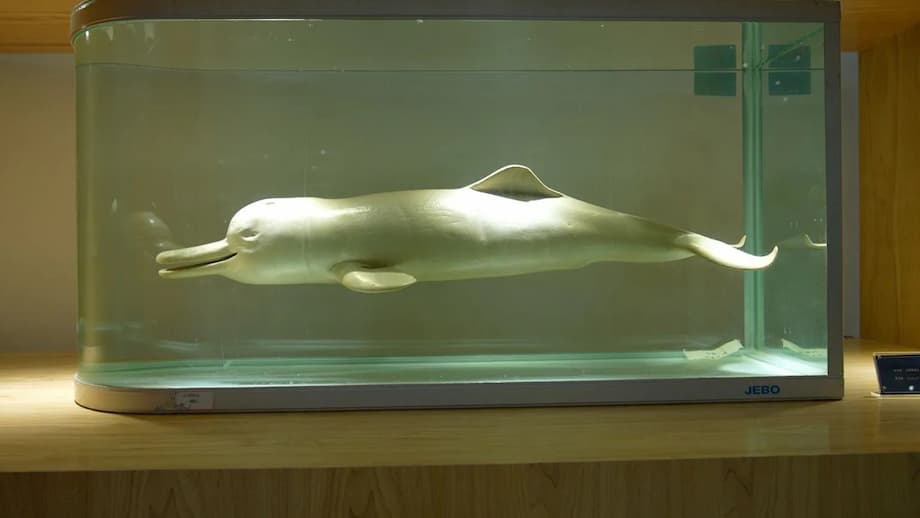China’s Last River Dolphin: The Urgent Fight to Save the Yangtze Finless Porpoise
In the heart of China, the mighty Yangtze River winds through bustling cities and fertile plains, supporting the lives of over 400 million people. Yet beneath its surface, a silent struggle is unfolding. The Yangtze finless porpoise—an intelligent, playful mammal with a perpetual smile—has become the river’s last surviving cetacean. Once sharing these waters with the now-extinct baiji dolphin and the paddlefish, the finless porpoise is now critically endangered, with only about 1,200 individuals left in the wild. Its fate is a barometer for the health of the entire Yangtze ecosystem.
- China’s Last River Dolphin: The Urgent Fight to Save the Yangtze Finless Porpoise
- Why Is the Yangtze Finless Porpoise Endangered?
- Turning the Tide: Conservation Efforts and Successes
- Challenges That Remain: Can the Recovery Last?
- China’s Conservation Model: Lessons for the World
- Why the Porpoise Matters: An Indicator of River Health
- In Summary
Why Is the Yangtze Finless Porpoise Endangered?
The Yangtze finless porpoise (Neophocaena asiaeorientalis asiaeorientalis) is the world’s only freshwater porpoise and is found exclusively in China’s Yangtze River and its connected lakes, Poyang and Dongting. Its population has plummeted from an estimated 3,600 in the early 1990s to just over 1,000 by 2017, prompting its classification as critically endangered by the International Union for Conservation of Nature (IUCN) in 2013.
Several factors have driven this decline:
- Overfishing: Decades of intensive fishing depleted the porpoise’s food supply, mirroring the fate of the baiji dolphin.
- Pollution: Industrial waste, agricultural runoff, and untreated sewage have degraded water quality, affecting both porpoises and their prey.
- Habitat Loss and Fragmentation: Dam construction, especially the Three Gorges Dam, altered river flow and blocked migration routes for many aquatic species.
- Ship Traffic and Noise Pollution: The Yangtze is a major transportation artery. Underwater noise from ships disrupts the porpoise’s echolocation, essential for navigation and hunting, and may have contributed to the baiji’s extinction.
- Illegal and Bycatch Fishing: Despite bans, illegal fishing persists, and porpoises are often injured or killed by abandoned lines and gillnets.
These threats are compounded by the porpoise’s slow reproductive rate and the challenges of conserving a species in one of the world’s most densely populated and economically vital river basins.
Turning the Tide: Conservation Efforts and Successes
Despite the daunting odds, the past decade has seen a remarkable turnaround in the fortunes of the Yangtze finless porpoise. After years of relentless decline, the population has increased by over 23% in the last five years, rising from 1,012 in 2017 to 1,249 in 2022. This is the first recorded increase since monitoring began, offering a rare glimmer of hope for river dolphins worldwide.
Fishing Ban: A Game-Changer for the Yangtze
One of the most significant interventions was the introduction of a complete fishing ban along the Yangtze River and its major tributaries in 2021. This bold policy, enforced by police and carrying stiff penalties, put 220,000 fishermen out of work but has led to a dramatic rebound in fish populations. The ban is seen as essential for restoring the river’s ecological balance and providing enough food for the porpoise and other wildlife.
Scientists and conservationists hope the ban will be extended beyond its initial 10-year period, as the recovery of both fish stocks and porpoise populations is still fragile.
Protected Areas and Habitat Restoration
China has established eight in-situ reserves (protected areas within the natural habitat) and three ex-situ conservation areas (semi-natural refuges or breeding centers) for the Yangtze finless porpoise. These reserves are designed to safeguard critical habitats, reduce human disturbance, and provide safe zones for breeding and feeding.
However, not all reserves are equally effective. Research shows that some protected areas, especially those with poor management or insufficient enforcement, have seen porpoise numbers decline faster than in unprotected areas. Experts recommend redrawing reserve boundaries to align with current porpoise migration patterns and increasing resources for patrols and community engagement.
Artificial Breeding and Reintroduction: A New Frontier
Artificial breeding has emerged as a vital tool in the conservation arsenal. At the Baiji Dolphin Hall in Wuhan, researchers have successfully bred several generations of Yangtze finless porpoises in captivity. The most famous, Tao Tao, was the first of his species born in an artificial environment in 2005. These efforts have not only increased the captive population but also provided invaluable insights into porpoise health, behavior, and husbandry.
In a landmark achievement, Chinese biologists recently rescued, rehabilitated, and reintroduced two captive-bred male porpoises into the wild. After a period of acclimation in a semi-natural waterway, the porpoises were released into the Yangtze, where they integrated with wild pods and thrived for at least three years. This rare success in cetacean reintroduction offers hope for boosting wild populations and maintaining genetic diversity.
Community Involvement and Public Awareness
Local communities play a crucial role in conservation. Many former fishermen have become river guards and porpoise observers, helping enforce fishing bans and monitor porpoise activity. Public awareness campaigns, such as “Keep the Finless Porpoise Smiling,” have galvanized support and educated millions about the species’ plight.
Technology is also being harnessed for conservation. Lenovo, in partnership with the Wuhan Baiji Dolphin Conservation Foundation, has launched the world’s first Yangtze finless porpoise tracking map and viewing guide. This initiative uses artificial intelligence to analyze porpoise movements, identify optimal observation points, and engage the public in citizen science and ecotourism.
Challenges That Remain: Can the Recovery Last?
Despite recent gains, the Yangtze finless porpoise remains on the brink. Scientists warn that the window for effective conservation is narrow. Demographic models predict that, without continued and enhanced intervention, the species could face extinction in as little as 25–33 years in the wild.
Ongoing Threats
- Illegal Fishing and Bycatch: Even with the fishing ban, illegal activity persists, and enforcement is challenging, especially in remote or poorly managed reserves.
- Habitat Fragmentation: Dams and water diversion projects continue to alter river flow and block migration routes, isolating porpoise populations and reducing genetic diversity.
- Pollution: While water quality has improved in many areas, industrial and agricultural runoff remains a threat, especially in rapidly developing regions.
- Noise Pollution: Ship traffic is unlikely to decrease, and underwater noise continues to disrupt porpoise communication and navigation.
- Climate Change: Altered rainfall patterns and extreme weather events could further stress the river ecosystem and its inhabitants.
Moreover, some reserves were originally established for the baiji dolphin and do not align with the current needs of the finless porpoise, leaving key habitats unprotected. Experts advocate for adaptive management, flexible conservation zones, and greater involvement of local knowledge in reserve design.
Scientific Advances: Mapping and Modeling for Better Protection
Recent scientific studies have used advanced modeling techniques, such as Random Forest-based Species Distribution Models, to map porpoise habitat preferences and predict their distribution. These models reveal that habitat use varies by season and is influenced by factors like cyanobacteria levels and total phosphates, which affect prey availability. Incorporating environmental DNA and machine learning is helping refine conservation strategies and target interventions where they are most needed.
Surveys in previously overlooked areas, such as the Jingjiang section of the Yangtze, have discovered higher-than-expected porpoise populations, underscoring the importance of expanding research and protection to data-poor regions.
China’s Conservation Model: Lessons for the World
China’s integrated approach—combining in-situ and ex-situ conservation, strict legal protection, community engagement, and technological innovation—has attracted international attention. Delegations from Southeast Asia have visited Chinese reserves to learn from these successes, hoping to apply similar strategies to protect endangered river dolphins like the Irrawaddy dolphin.
The “One Plan Approach” integrates policy, science, education, and public participation. Real-time acoustic monitoring, AI-driven tracking, and public viewing guides are setting new standards for riverine cetacean conservation. The fishing ban, in particular, is seen as a model for restoring biodiversity in heavily exploited rivers worldwide.
Legal Protection and Policy Support
In a major policy boost, the Yangtze finless porpoise was upgraded to China’s highest level of legal protection in 2021. This status not only increases penalties for harming the species but also raises public awareness and channels more resources into conservation. The government’s “Yangtze River Porpoise Rescue Action Plan (2016–2025)” and the Yangtze River Protection Law have provided a strong legal framework for ongoing efforts.
Why the Porpoise Matters: An Indicator of River Health
The Yangtze finless porpoise is more than a charismatic species; it is an indicator of the river’s ecological health. Its survival depends on clean water, abundant fish, and a balanced ecosystem—conditions that benefit all life along the Yangtze, including humans. As Mei Zhigang, a researcher at the Institute of Hydrobiology, explains:
“The population status of the Yangtze finless porpoise serves as a barometer of the ecological environment of the Yangtze River.”
Success in saving the porpoise would signal a broader recovery for the river and its extraordinary biodiversity, from migratory birds to rare fish and aquatic plants.
In Summary
- The Yangtze finless porpoise is the world’s only freshwater porpoise and is critically endangered, with about 1,200 left in the wild.
- Major threats include overfishing, pollution, habitat loss, noise from ships, and illegal fishing.
- Conservation efforts—especially the fishing ban, protected areas, artificial breeding, and community involvement—have led to the first population increase in decades.
- Challenges remain, including illegal fishing, habitat fragmentation, and pollution, requiring adaptive management and stronger enforcement.
- China’s integrated conservation model is inspiring similar efforts abroad and demonstrates that recovery is possible with coordinated action.
- The porpoise’s fate is closely tied to the health of the Yangtze River and the well-being of millions who depend on it.












